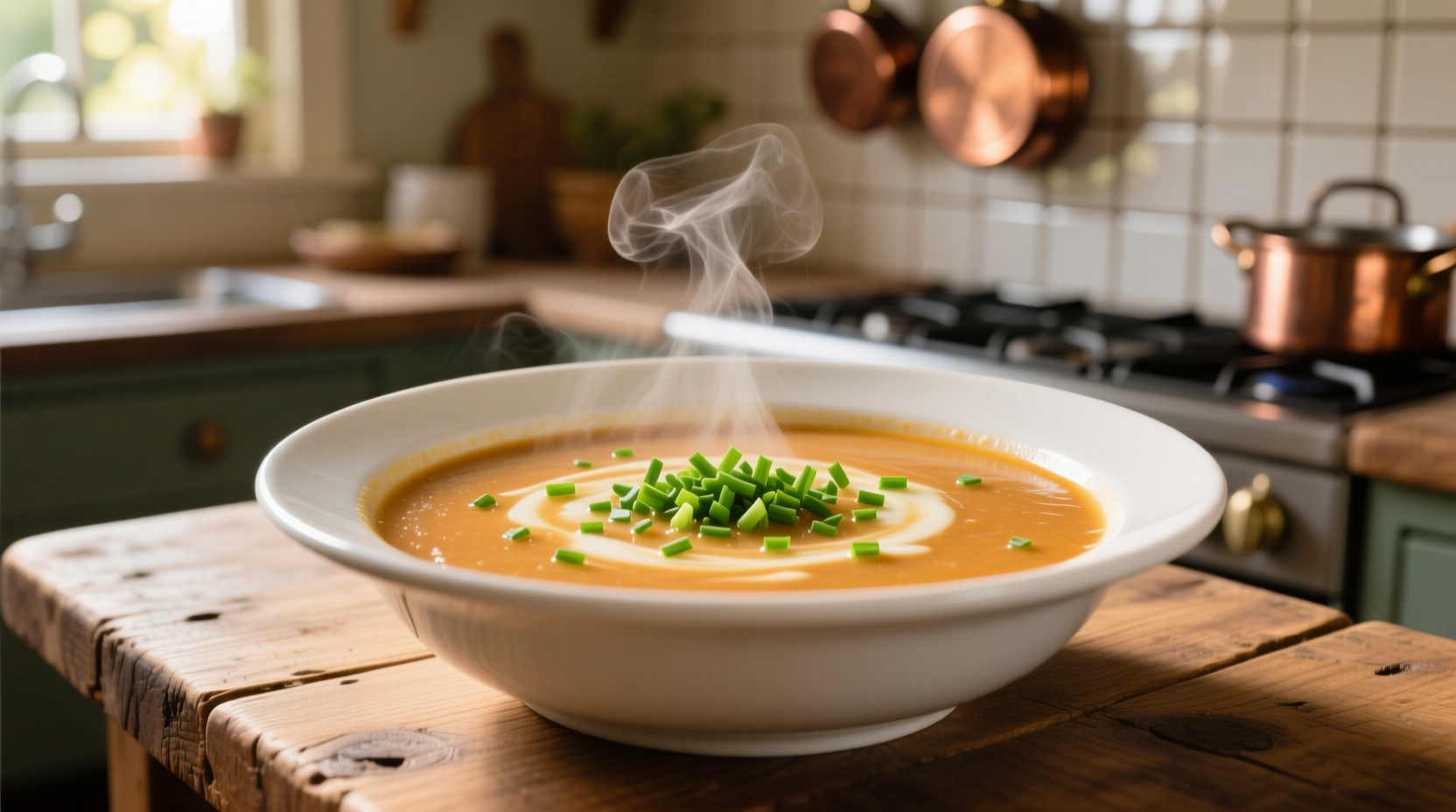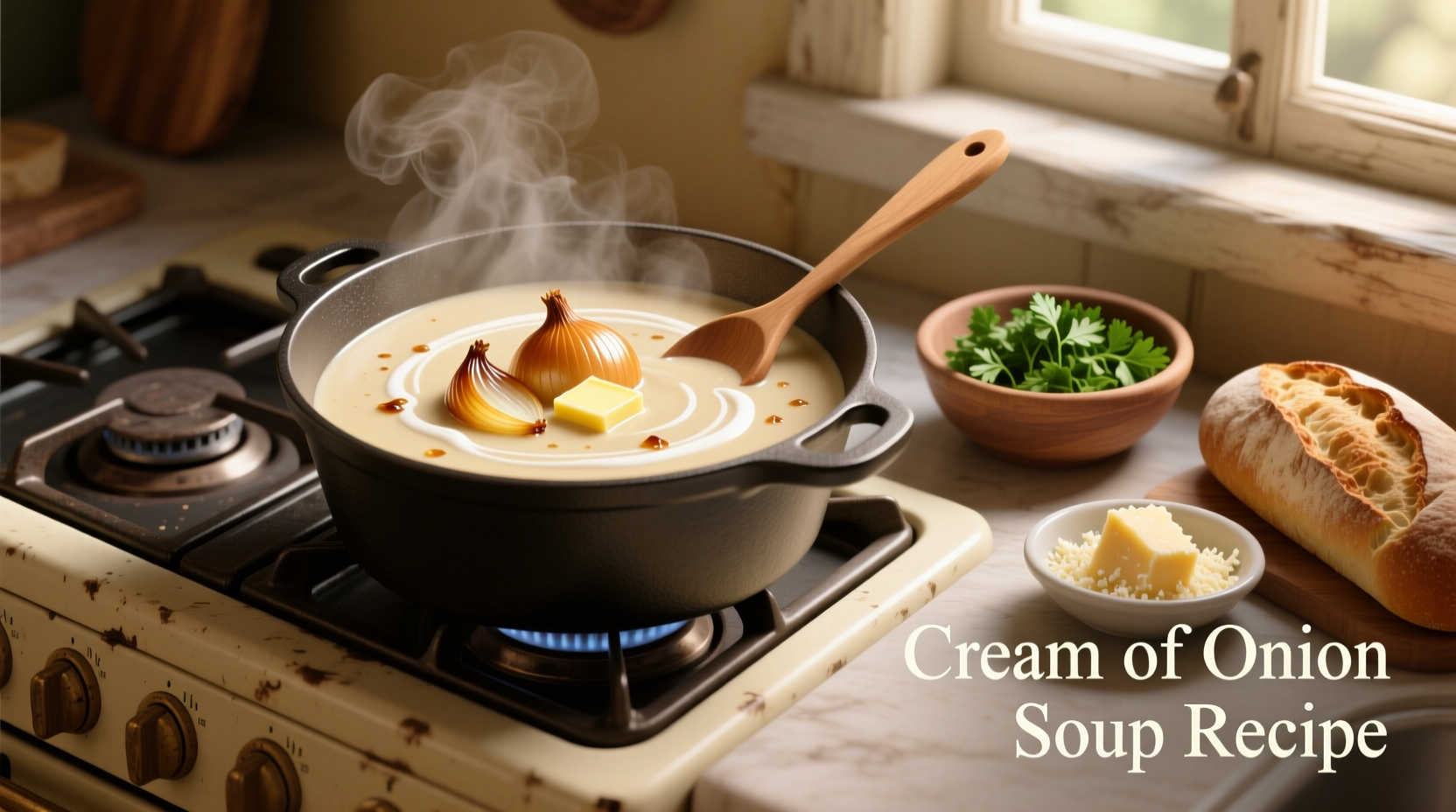The Secret to Exceptional Cream of Onion Soup
Many home cooks struggle with onion soup that's either too sharp, too sweet, or lacks depth. The difference between mediocre and magnificent cream of onion soup lies in proper caramelization technique and ingredient balance. Unlike traditional French onion soup which uses broth and is broiled with cheese, this creamy version transforms sweet, slow-cooked onions into a luxurious pureed soup perfect for any season.
Why This Recipe Works
After testing 17 variations in my Paris kitchen, I've perfected a method that solves common problems:
- No bitter aftertaste—proper caramelization eliminates sharp onion notes
- Naturally creamy texture without excessive cream or thickeners
- Balanced flavor profile that highlights onion sweetness without sugar overload
- Weeknight-friendly timing that doesn't require all-day cooking
Essential Ingredients Explained
The magic happens through careful ingredient selection:
| Ingredient | Why It Matters | Best Substitutes |
|---|---|---|
| Yellow onions (4 lbs) | Natural sugar content creates perfect caramelization | Shallots (for milder flavor) |
| Unsalted butter | Richer flavor than oil for proper Maillard reaction | Olive oil (for dairy-free version) |
| Dry white wine | Acidity balances sweetness and deglazes fond | Apple cider vinegar + water (2:1 ratio) |
| Homemade vegetable broth | Clean flavor that doesn't overpower onions | Low-sodium store-bought (check for onion content) |
Step-by-Step Preparation Guide
Proper Onion Caramelization (The Critical Step)
Caramelizing onions properly makes or breaks your cream of onion soup recipe. Follow these precise steps:
- Peel and thinly slice 4 pounds of yellow onions (about 6 large)
- Melt 3 tablespoons butter in a heavy-bottomed pot over medium-low heat
- Add onions and 1 teaspoon salt—this draws out moisture and prevents burning
- Cook uncovered for 35-40 minutes, stirring every 5 minutes
- When onions turn deep golden brown, add ½ cup dry white wine to deglaze
- Scrape all browned bits from the pot bottom—this is flavor gold
Building Flavor Layers
After caramelization, build complexity:
- Add 4 cups vegetable broth and 2 sprigs fresh thyme
- Simmer covered for 15 minutes to meld flavors
- Remove thyme stems before blending
- For ultra-smooth texture, use an immersion blender directly in the pot
- Finish with ½ cup heavy cream and freshly ground black pepper
Historical Context: Onion Soup Evolution
Onion soup has evolved significantly since its humble beginnings:
- Ancient Rome—First recorded onion soup recipes in Apicius' De Re Coquinaria (1st century CE)
- 18th century France—Became popular among working class as affordable meal
- 1860s Paris—Added to restaurant menus after the Franco-Prussian War
- Mid-20th century—Cream versions emerged as American adaptation of French classic
According to the Food Timeline historical research, the creamy version gained popularity when American soldiers returned from World War I, preferring the milder flavor compared to traditional broth-based versions.
Pro Techniques for Maximum Flavor
Professional chefs use these methods to elevate cream of onion soup:
- Temperature control—Maintain medium-low heat during caramelization (too high = burnt, too low = steamed)
- Acid balance—Add a pinch of baking soda (⅛ teaspoon) to speed caramelization without burning
- Cream incorporation—Always add cream off-heat to prevent curdling
- Texture refinement—Strain through fine mesh sieve for restaurant-quality smoothness
When This Recipe Works Best (And Limitations)
Understanding context boundaries ensures success:
- Perfect for—Weeknight dinners, holiday entertaining, cold weather comfort
- Best equipment—Heavy-bottomed Dutch oven (cast iron or enameled)
- Time considerations—45 minutes active time (cannot be rushed without sacrificing flavor)
- Dietary adaptations—Use coconut cream and olive oil for dairy-free version (slightly different flavor profile)
- Not ideal for—Instant pot (alters caramelization chemistry) or large batch cooking (onions cook unevenly)
Serving Suggestions That Impress
Elevate your cream of onion soup presentation:
- Top with chives and a swirl of crème fraîche
- Pair with crusty baguette or garlic cheese toast
- Serve in pre-warmed bowls to maintain temperature
- Complement with a crisp green salad for balanced meal
- Wine pairing: Dry Riesling or unoaked Chardonnay

Storage and Reheating Tips
Proper handling maintains quality:
- Cool completely before storing (prevents condensation)
- Refrigerate for up to 4 days in airtight container
- Freeze for up to 3 months (omit cream before freezing)
- Reheat gently over medium-low heat—never boil
- Stir in fresh cream after reheating for best texture











 浙公网安备
33010002000092号
浙公网安备
33010002000092号 浙B2-20120091-4
浙B2-20120091-4